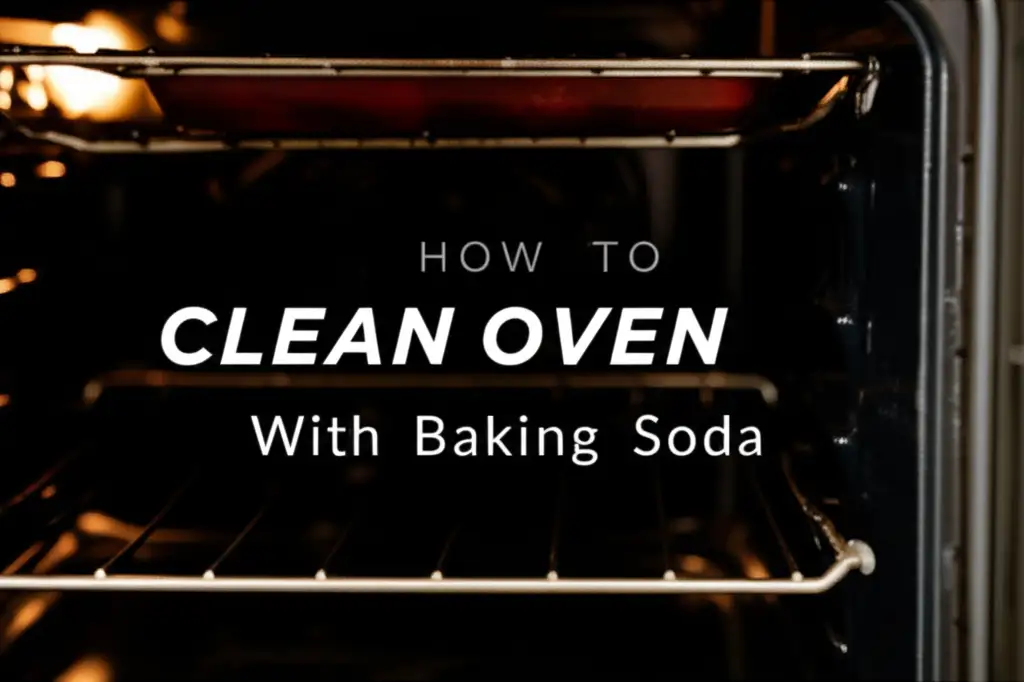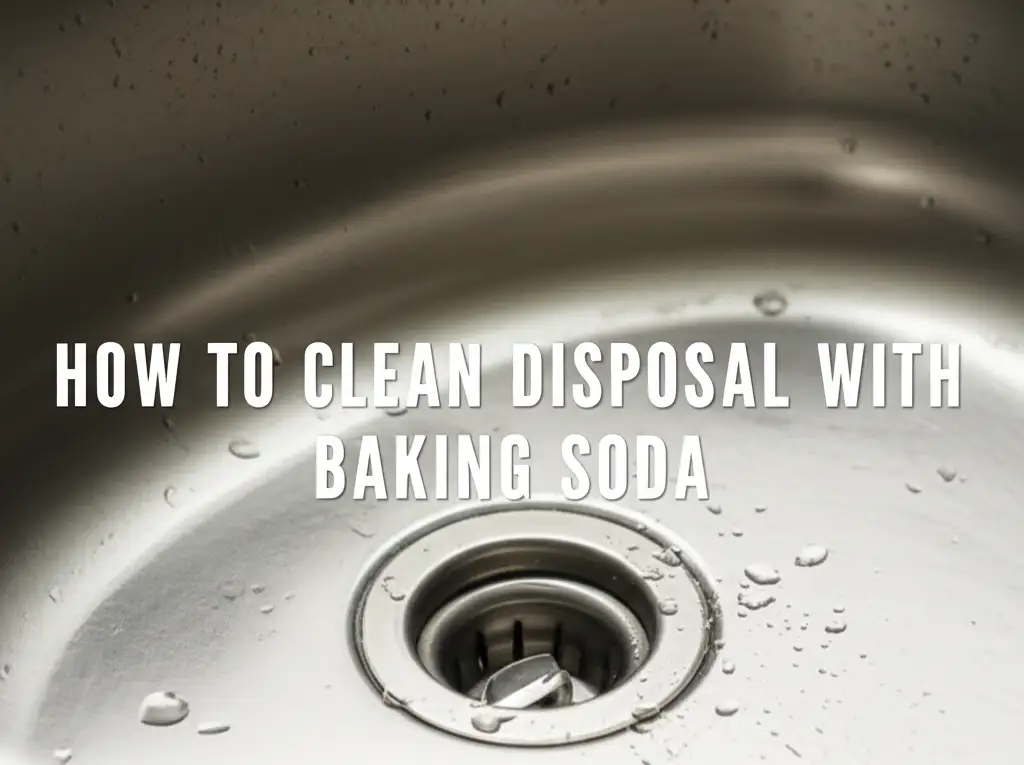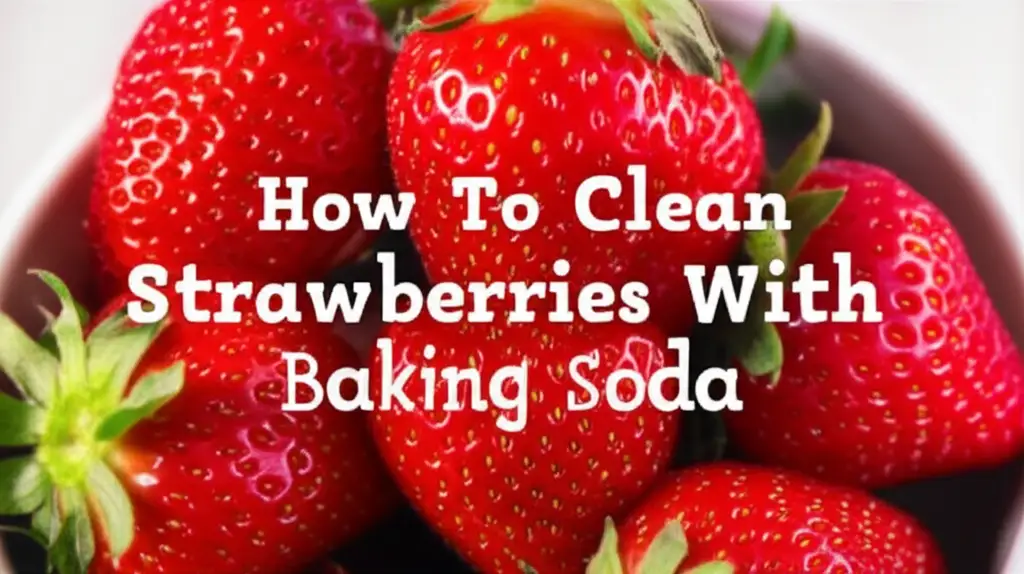· Kitchen Cleaning · 18 min read
How To Clean Oven With Baking Soda

Clean Oven with Baking Soda: Your Natural Guide
A dirty oven feels like a battleground for baked-on food and stubborn grease. Many people reach for harsh chemical cleaners. These products often have strong fumes and require careful handling. But what if there was a simpler, safer way to get a sparkling clean oven?
I discovered the power of baking soda for oven cleaning years ago. It is an incredibly effective and natural solution. This common pantry staple tackles grime without harsh chemicals. It breaks down tough stains, making them easy to wipe away.
In this guide, I will share how to clean your oven with baking soda. We will cover preparation, the step-by-step cleaning process, and tips for maintaining cleanliness. You will learn to tackle everything from greasy spills to burnt-on residue. Get ready to transform your oven naturally.
Takeaway:
- Baking soda offers a safe, effective way to clean your oven.
- The method involves applying a baking soda paste and letting it sit overnight.
- Scrubbing and wiping remove grime easily after the paste softens it.
- Regular maintenance prevents heavy buildup.
To clean your oven with baking soda, you apply a thick paste of baking soda and water to all dirty surfaces inside the oven. You then let this paste sit for at least 12 hours, allowing it to break down baked-on grease and food. Finally, you wipe away the loosened grime and rinse. This method offers a safe, chemical-free approach.
Why Choose Baking Soda for Oven Cleaning?
Many people wonder why baking soda is such a popular choice for cleaning. It has many benefits, especially when compared to traditional oven cleaners. Commercial cleaners often contain strong chemicals. These chemicals can irritate your skin, eyes, and respiratory system. They also leave behind a chemical smell.
Baking soda is a natural alternative. It is non-toxic and food-safe. This means you do not have to worry about chemical residues in your oven. It is safe for your family and pets.
I prefer baking soda because it is gentle yet powerful. Its mild abrasive quality helps scrub away grime. Its alkaline nature breaks down grease and food particles. This dual action makes it a superior choice for stubborn oven messes.
Another big advantage is cost. Baking soda is very inexpensive. You likely already have it in your pantry. Using it saves money on specialized cleaning products. It also supports an eco-friendly lifestyle. You reduce chemical waste and contribute to a healthier home.
Choosing baking soda for your oven cleaning makes sense for many reasons. It is effective, safe, affordable, and environmentally friendly. I encourage you to try this method for a cleaner, healthier kitchen. It works well on many surfaces, like when you clean your shower with baking soda. I often use it for general cleaning because of its versatility.
Gathering Your Supplies: What You Will Need
Before you start cleaning your oven, gathering all your supplies makes the process smoother. I always make sure everything is ready beforehand. This saves time and avoids interruptions. Having the right tools ensures an effective and efficient clean.
Here is a list of items you will need:
- Baking Soda: This is the star of our cleaning operation. Make sure you have a fresh box or two. Old baking soda might not be as potent.
- Water: Plain tap water works perfectly for creating the paste. You will also use it for rinsing.
- Rubber Gloves: Protecting your hands is always a good idea. Even though baking soda is gentle, it can dry out your skin.
- Spatula or Plastic Scraper: These tools help remove large, loose debris before cleaning. They are also useful for scraping off softened grime later. Avoid metal scrapers, as they can scratch the oven surface.
- Damp Cloths or Sponges: You will need several of these for wiping and rinsing. Microfiber cloths are excellent because they absorb well and do not leave lint.
- Spray Bottle (Optional but Recommended): A spray bottle filled with water or white vinegar is great for moistening dried paste or tackling tough spots.
- Small Bowl or Container: For mixing the baking soda paste.
- Newspaper or Old Towels: Lay these on the floor under your oven. They will catch any spills or drips. This protects your kitchen floor.
- Oven Racks Removal: Do not forget to take out your oven racks. They often need a separate cleaning. We will cover how to clean those too.
Having these items ready prevents delays. It helps you focus on the task at hand. This preparation ensures a thorough and satisfying oven cleaning experience. It is similar to how I prepare when I need to clean stains off a mattress with baking soda; preparation is key for any effective cleaning job.
Step-by-Step Guide: The Baking Soda Oven Cleaning Method
Cleaning an oven with baking soda is straightforward. It requires patience more than effort. I always tell people to dedicate enough time for the baking soda to work its magic. Here is my proven method for a sparkling oven.
Step 1: Prepare Your Oven
First, make sure your oven is completely cool. Never clean a hot oven. Safety comes first. Remove everything from the oven. Take out all racks, pizza stones, and any loose debris. Use your spatula or scraper to remove large, burnt food particles. A small vacuum cleaner can also help with crumbs.
Place old newspapers or towels on the floor under the oven door. This protects your floor from spills. It also makes cleanup easier. I always do this to save myself extra work later.
Step 2: Make the Baking Soda Paste
In a small bowl, mix about half a cup of baking soda with a few tablespoons of water. You want a thick, spreadable paste. It should resemble frosting or toothpaste. If it is too watery, add more baking soda. If it is too dry, add a little more water.
I usually start with a small amount of water and add slowly. This helps get the consistency just right. The goal is a paste that sticks to the oven surfaces.
Step 3: Apply the Baking Soda Paste
Put on your rubber gloves. Spread the baking soda paste all over the inside of your oven. Avoid the heating elements. Cover the walls, bottom, and even the inside of the oven door. Pay extra attention to greasy spots and baked-on food.
It is okay if the paste looks brown in places. This means it is working on the grime. I use my hands to really get the paste into all the corners and crevices. Make sure to apply a thick layer over stubborn areas.
Step 4: Let it Sit
This is the most important step. Let the baking soda paste sit for at least 12 hours, or even overnight. The longer it sits, the better it works. This gives the baking soda time to break down the grease and soften the tough, baked-on food.
I usually apply the paste before I go to bed. This way, it can work overnight without interruption. Do not worry about leaving it for an extended period; it is safe.
Step 5: Wipe Away the Grime
After the waiting period, put on your gloves again. Use a damp cloth or sponge to start wiping away the dried baking soda paste. As you wipe, you will notice the grime coming off with it. The dirt will be soft and easy to remove.
For very stubborn spots, use your plastic scraper or spatula. Gently scrape away the softened residue. You might need to dampen the area with water or a little vinegar and baking soda solution to help loosen any dried paste. I find that a spray bottle with plain water works wonders for re-moistening the paste.
Step 6: Rinse and Polish
Once most of the baking soda and grime are removed, use fresh, clean damp cloths to wipe down the oven. Rinse your cloth frequently. Continue wiping until all baking soda residue is gone. You want to make sure no white film remains.
For a final shine, spray a little white vinegar on a clean cloth and wipe the oven interior. Vinegar helps neutralize any leftover baking soda and leaves the surface sparkling. I always do this step. It creates a truly clean, streak-free finish. Your oven will look like new.
Remember, patience is key. This method takes time, but the results are worth it. You get a clean oven without harsh chemicals. This approach is similar to how you would clean a bathtub with baking soda, letting the paste sit to lift grime.
Tackling Tough Spots: Grease, Burnt-On Food, and Oven Racks
Sometimes, an oven has particularly stubborn spots. Years of spills and neglect can create formidable challenges. But do not despair; baking soda can handle these too. I have personally dealt with many difficult oven messes.
Deep Cleaning Stubborn Grease and Burnt-On Food
For extremely tough, baked-on grease or carbonized food, a single application might not be enough. After wiping away the first layer of baking soda paste, you might see lingering dark spots. Do not worry. I usually apply a second, thicker layer of baking soda paste to these specific areas.
Let this second application sit for another few hours or overnight. The extended contact gives the baking soda more time to penetrate the deep grime. You can also mix a small amount of dish soap into your baking soda paste for extra degreasing power. Dish soap helps break down oils. This combination works wonders on really sticky grease.
When dealing with tough spots, be patient. Sometimes, gentle scrubbing with a non-abrasive scrubber is needed. Avoid steel wool, as it can scratch your oven’s finish. I use a plastic scrub brush for these areas. It provides enough friction without causing damage. Removing melted plastic from an oven might require a different approach, but baking soda helps with the residual stains.
Cleaning Oven Racks Effectively
Oven racks often collect the worst of the grease and burnt food. They can be very challenging to clean inside the oven. I always clean them separately for the best results. There are a few effective methods using baking soda.
Bathtub Soak Method:
- Place a few old towels at the bottom of your bathtub to protect the surface.
- Lay the oven racks on top of the towels.
- Sprinkle a generous amount of baking soda over the racks.
- Pour hot water into the tub until the racks are fully submerged.
- Add half a cup of dish soap to the water for extra grease-cutting power.
- Let them soak overnight, or even for 24 hours.
- The next day, the grime will be softened. You can easily scrub it off with a brush or sponge. Rinse thoroughly. This method is incredibly effective.
Baking Soda Paste for Racks:
- If you do not want to use your bathtub, you can clean racks in a large utility sink or on a protected counter.
- Apply a thick baking soda paste directly to the racks.
- Let it sit for several hours.
- Scrub with a brush or sponge. This method requires more scrubbing but also works.
Remember, oven racks can be challenging. Soaking them is often the easiest way to remove heavy buildup. This cleaning method also works for removing oil from the oven surfaces themselves. For truly stubborn rack grime, some people find success with specific aluminum foil methods for oven racks.
Cleaning the Oven Door and Glass Effectively
The oven door and its glass can be very frustrating to clean. Splatters and drips often bake onto the glass, creating a hazy, dirty appearance. Luckily, baking soda works wonders here too. I have made many hazy oven doors sparkle again.
First, identify if your oven door glass is removable. Some models allow you to take out the inner glass panel. If so, remove it for easier access. This makes cleaning much simpler. Always check your oven’s manual for instructions on how to do this safely.
For the oven door, follow these steps:
- Prepare the Surface: Ensure the oven door is cool. Lay down old towels or newspapers underneath to catch drips.
- Apply Baking Soda Paste: Mix baking soda with a little water to form a thick paste. Spread this paste directly onto the oven door glass. Apply it generously over any burnt-on grime or streaks. Do not forget the frame of the door itself. Grease often collects there too.
- Let it Sit: Allow the paste to sit for at least 30 minutes to an hour. For very stubborn grime, let it sit for a few hours. The longer it sits, the more it will soften the baked-on residue.
- Scrub Gently: After waiting, use a non-abrasive sponge or a plastic scraper. Gently scrub and scrape away the paste and grime. You will notice the dirt lifting off easily. For very tough spots, you can use a plastic razor blade. This helps lift burnt-on food without scratching the glass.
- Wipe Clean: Use a damp cloth to wipe away all the baking soda residue and loosened dirt. Rinse your cloth frequently with clean water. Keep wiping until the glass is clear and streak-free.
- Final Polish: For a perfectly clear finish, spray a small amount of white vinegar onto a clean microfiber cloth. Wipe down the glass. The vinegar helps remove any remaining streaks or baking soda film. It leaves the glass sparkling. This step is crucial for achieving a truly pristine look.
I find that using a microfibre cloth for the final polish is essential. It prevents lint and ensures a streak-free shine. This method works very well for the glass and metal parts of the oven door. It makes a big difference in how clean your oven looks overall. The process is similar to how I use baking soda to clean stainless steel pans, focusing on gentle yet effective scrubbing.
Maintenance and Prevention: Keeping Your Oven Clean Longer
Cleaning a very dirty oven takes time and effort. Once your oven is sparkling, you want to keep it that way. Regular maintenance is key. It prevents heavy buildup from occurring again. I have a few simple habits that keep my oven looking fresh between deep cleans.
First, wipe up spills immediately. This is the most important tip. If food or liquid spills while cooking, wait for the oven to cool down. Then, wipe it up right away with a damp cloth. Fresh spills are much easier to clean than baked-on ones. A quick wipe prevents them from turning into stubborn stains. This simple act saves hours of scrubbing later.
Second, use oven liners. Silicone or aluminum foil oven liners can catch drips and spills. Place them on the bottom rack of your oven. When they get dirty, you simply remove and clean or replace them. This protects the bottom of your oven from direct contact with spills. Make sure your liner does not cover the vents or impede air circulation.
Third, do a quick clean after major cooking sessions. After baking a casserole or roasting a chicken, glance inside your oven. If you see small splatters, wipe them down. A quick spray of water and a wipe with a cloth is often enough. This proactive approach stops grime from accumulating. I always do a quick check after roasting anything.
Fourth, regularly clean your oven racks. Even if the oven interior looks fine, racks can get greasy. Remove them and give them a quick scrub with hot soapy water. You can even spray them with a baking soda and water solution and let it sit for a bit before rinsing. This prevents grease from dripping down onto the oven floor.
Fifth, ventilate your kitchen when cooking greasy foods. Good air circulation helps remove grease particles from the air. This can reduce how much grease settles inside your oven. Use your range hood fan while cooking.
Finally, schedule a mini-clean or touch-up. I aim for a mini-clean every 1-2 months. This involves a lighter application of baking soda paste on high-traffic areas. I let it sit for just a few hours. This prevents the need for another full overnight soak. Regular, small efforts make a huge difference in maintaining a consistently clean oven. You can combine this with other appliance cleaning like when you clean your dishwasher with vinegar and baking soda.
Baking Soda vs. Commercial Oven Cleaners: A Comparison
When it comes to oven cleaning, you usually choose between baking soda and commercial oven cleaners. Both get the job done, but they have big differences. I have used both extensively. I want to highlight why I prefer baking soda for most situations.
Commercial Oven Cleaners:
- Speed: Commercial cleaners often work very fast. Some claim to clean an oven in just 30 minutes. This is attractive if you are in a hurry.
- Power: They contain strong chemicals like lye or caustic soda. These chemicals break down grease and baked-on food very effectively.
- Fumes: The biggest downside is the fumes. These products produce strong, noxious fumes. They can irritate eyes, skin, and lungs. Good ventilation is always required.
- Safety: They are highly corrosive. You must wear gloves and eye protection. They are dangerous if ingested. They pose a risk to children and pets.
- Residue: It can be hard to rinse them completely. This leaves chemical residue in your oven. Some people worry about these residues affecting food.
- Cost: They are more expensive than baking soda.
Baking Soda Oven Cleaners:
- Safety: Baking soda is non-toxic and food-safe. It does not produce harmful fumes. It is safe for families, pets, and the environment. I use it without worrying about chemical exposure.
- Effectiveness: It is highly effective at breaking down grease and carbonized food. It requires patience, usually an overnight soak. But the results are impressive.
- Cost: It is very inexpensive. Most people already have it at home.
- Fumes: There are no harsh chemical fumes. Your kitchen smells clean, not like chemicals.
- Application: It is easy to apply as a paste. It sticks well to vertical surfaces.
- Rinsing: It rinses away easily with water. It leaves no harmful residue. A final wipe with vinegar neutralizes any remaining baking soda, ensuring a perfectly clean surface.
- Time: This method takes more time because it needs a long soak. However, it requires less active scrubbing effort.
For me, the safety and environmental benefits of baking soda outweigh the speed of commercial cleaners. I prefer knowing my oven is truly chemical-free after cleaning. While commercial cleaners can be powerful, I find baking soda achieves a similar level of clean with far less risk. My preference is for natural solutions, similar to how I often combine vinegar and baking soda to clean other surfaces in my home.
Frequently Asked Questions About Cleaning Ovens with Baking Soda
Q1: Is it safe to use baking soda on all oven types?
Yes, baking soda is safe for most conventional ovens, including gas and electric models. It is a non-abrasive cleaner. It will not scratch enamel or stainless steel surfaces inside your oven. Always avoid self-cleaning cycles after using baking soda; wipe it all out first.
Q2: How long should I leave the baking soda paste in the oven?
For best results, leave the baking soda paste on for at least 12 hours, preferably overnight. This extended time allows the baking soda to effectively break down tough grease and baked-on food. More severe grime might benefit from a 24-hour soak.
Q3: Do I need to use vinegar after baking soda?
Using vinegar is optional but highly recommended. Vinegar acts as a natural neutralizer for baking soda. It helps remove any lingering white residue and leaves a streak-free shine. It also helps cut through any remaining grease. I always use a final wipe with vinegar.
Q4: Can I use baking soda on my oven’s heating elements?
No, avoid applying baking soda paste directly to heating elements. These parts are usually self-cleaning during oven use. Applying paste to them can cause damage or create an odor when the oven is next turned on. Focus cleaning on the interior surfaces and door.
Q5: What if my oven still has tough spots after cleaning?
For very stubborn spots, repeat the baking soda paste application. Apply a thicker layer to the problematic area and let it sit for several more hours. You can also gently scrub with a plastic scraper or a non-abrasive sponge. Patience and a second application often solve the issue.
Q6: Can I mix baking soda with other cleaners for a stronger effect?
While baking soda works well on its own, avoid mixing it with harsh commercial oven cleaners. However, you can safely mix baking soda with dish soap or white vinegar. Dish soap adds degreasing power, and vinegar aids in rinsing and neutralizing. I often use these combinations for tougher tasks.
Conclusion
Cleaning your oven with baking soda truly transforms a daunting chore into a simple, safe process. I have seen firsthand how effective this natural method is. It tackles tough grease and baked-on food without the fumes or risks of chemical cleaners. You get a sparkling clean oven using common household items.
By following the simple steps outlined, you can achieve impressive results. Remember to prepare your oven, apply the baking soda paste generously, and allow ample time for it to work. The patience involved pays off with a clean, fresh, and residue-free oven. Regular maintenance habits will keep your oven looking its best.
Say goodbye to harsh chemicals and hello to a naturally clean kitchen. Embrace the power of baking soda for your oven cleaning needs. Give this method a try. You will be amazed at how simple and effective it is to achieve a gleaming oven with just a little time and effort. Your oven will thank you!
- baking soda
- oven cleaning
- natural cleaner
- DIY cleaning
- chemical-free




